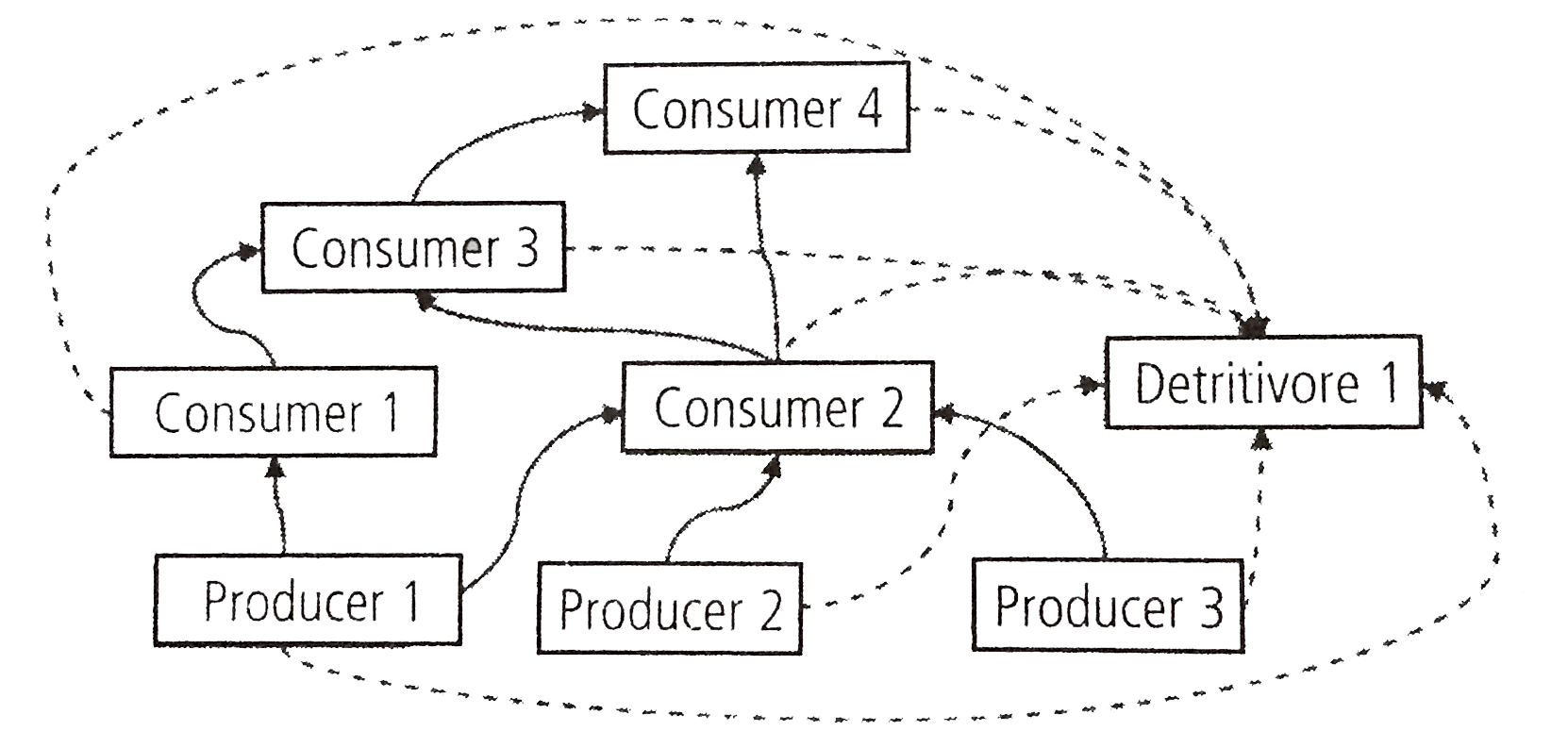A study of a meadow ecosystem revealed the following trophic relationships : sweet clover -grasshoppers -toads -snakes . The primary produced (s) in the meadow is (are) _____.
Sweet clover
Grasshoppers
Toads
Snakes
The correct Answer is:A
Similar Questions
Knowledge Check
Which of the following statements is 1 are false?
I. In ecosystem food webs are found.
II Dry weight is chosen for expressing the biomass of a species. It is to avoid variation in weight due to seasonal moisture differences in the biomass.
III. Biogeochemical cycles occurs in Ecosystems.
IV. Photosynthesis and respiration are central to carbon cycle.
V. Atmosphere contains about 1% of total carbon.
VI. Rapid deforestation and massive burning of fossil fuel for energy and transport increased the rate of CO2 release into the atmosphere causing green house effect.
VII. The products of ecosystem processes are named as ecosystem services.
Vlll. Healthy ecosystems are base for a wide range of environmental services but not for economic growth.
IX. Healthy forest ecosystems not mitigate droughts.
X Robert Constanza et al have tried to put price tags on nature’s life support services.
XI. A. G. Transley coined the term Ecosystem
XII. The open ocean and tropical rain forest are the two largest contributes to Earth’s net primary productivity. Both have high rates of net primary productivity and both cover huge surface area of the Earth.AI, III, V, VIIBVIII and lXCII, IV, VI, XDXI, XIIIn aquatic ecosystems which one(s) is of paramount importance as primary producer in food chain?
AAlgaeBAngiospermsCPistiaDGelidiumIn most ecosystems, the biomass of a trophic level is higher than the biomass of its predators, as illustrated below by an upright pyramid of biomass. In the open ocean, however, the biomass of primary producers (microscopic algae) is often lower than the biomass of higher trophic levels (for example, zooplankton and fish), as illustrated below by an inverted pyramid of biomass, in the open ocean, how can there be enough food to support the higher trophic levels?

Remember— The width of the bars indicates the amount of biomass at each trophic level.AThe microscopic primary producers are a source of food of high quality.BThe microscopicprimary producers have high rates of growth and reproduction.CThe microscopic primary producers are very abundant.DThe higher trophic levels are cold-blooded animals which do not require much food.
Reorganize the following food chain. Describe the ecosystem to which it belongs. Grasshopper → Snake → Paddy field → Eagle →Frog
View SolutionReorganize the following food chain. Describe the ecosystem to which it belongs. Grasshopper → Snake → Paddy field → Eagle →Frog
View Solution(a) How is energy introduced into the ecosystem ?
(b) Consider the following food chains :
(i) Plants → Mice → Snakes → Hawks
(ii) Plants → Mice → Hawks
If energy available at the producer level in both the food chains is 100 J, in which case will hawks get more energy as food and by how much ? Justify your answer.
View SolutionFood chains are very important for the survival of most species. When only one element is removed from the food chain it can result in extinction of a species in some cases. The foundation of the food chain consists of primary producers
Primary producers, or autotrophs, can use either solar energy or chemical energy to create complex organic compounds, whereas species at higher trophic levels cannot and so must consume producers or other life that itself consumes producers. Because the sun's light is necessary for photosynthesis, most life could not exist if the sun disappeared. Even so, it has recently been discovered that there are some forms of life, chemotrophs, that appear to gain all their metabolic energy from chemosythesis driven by hydrothermal vents, thus showing that some life may not require solar energy to thrive.

Which of the following limits the number of trophic levels in a food chain?
View SolutionThe given diagram represents the relationships between organisms in a remote pond ecosystem. From this information. Which of the following is the most likely to be correct?

1) DDT present in the ecosystem would accumulate to the highest concentrations in the tissues of detritivore 1.
2) The introduction of consumer 4 individuals from an external population would lead a temporary increase in number of producer 2.
3) Disease in the producer 1 population would lead to an increase in the producer 3 population.
4) Extermination of consumer 3 would cause a sustained increase in the population of consumer 2.
View Solution
